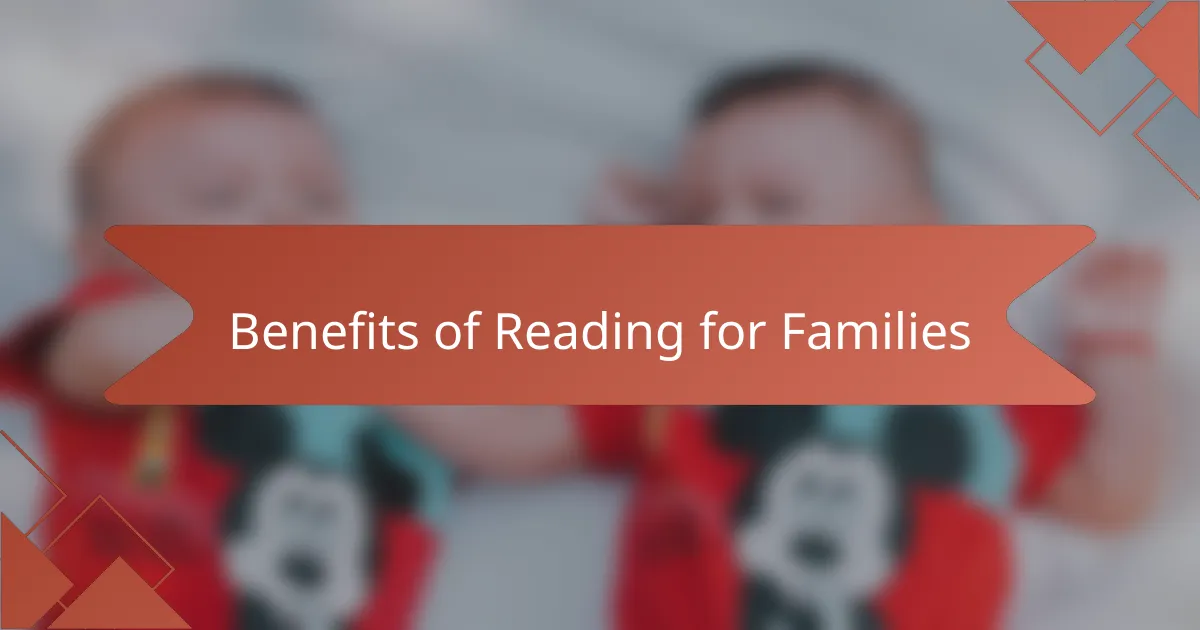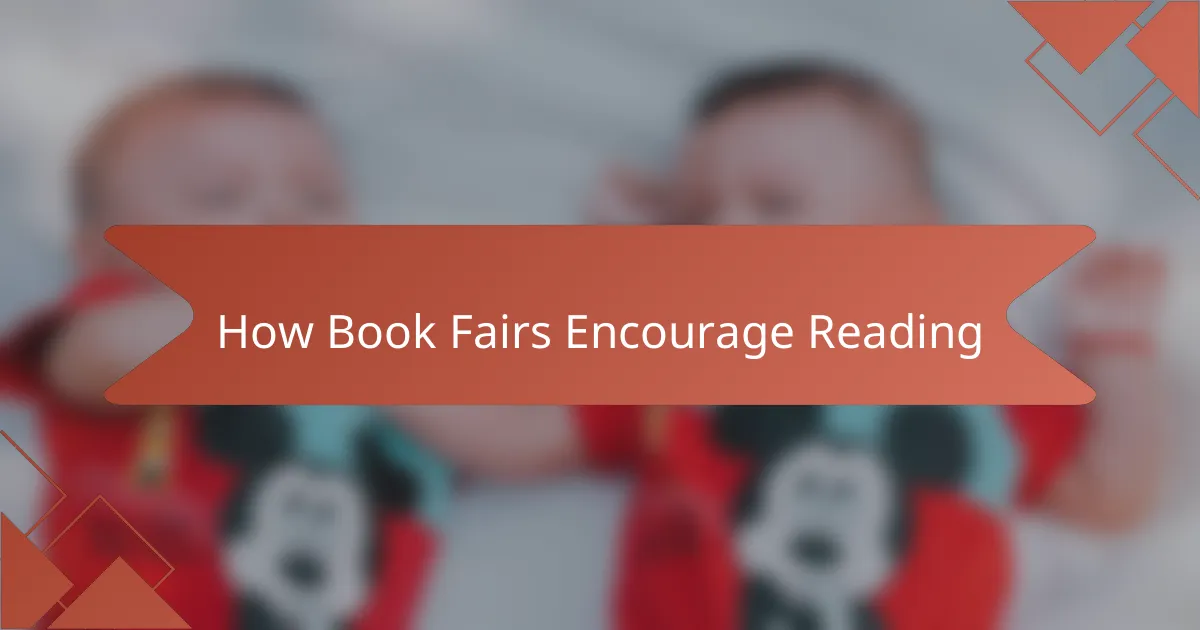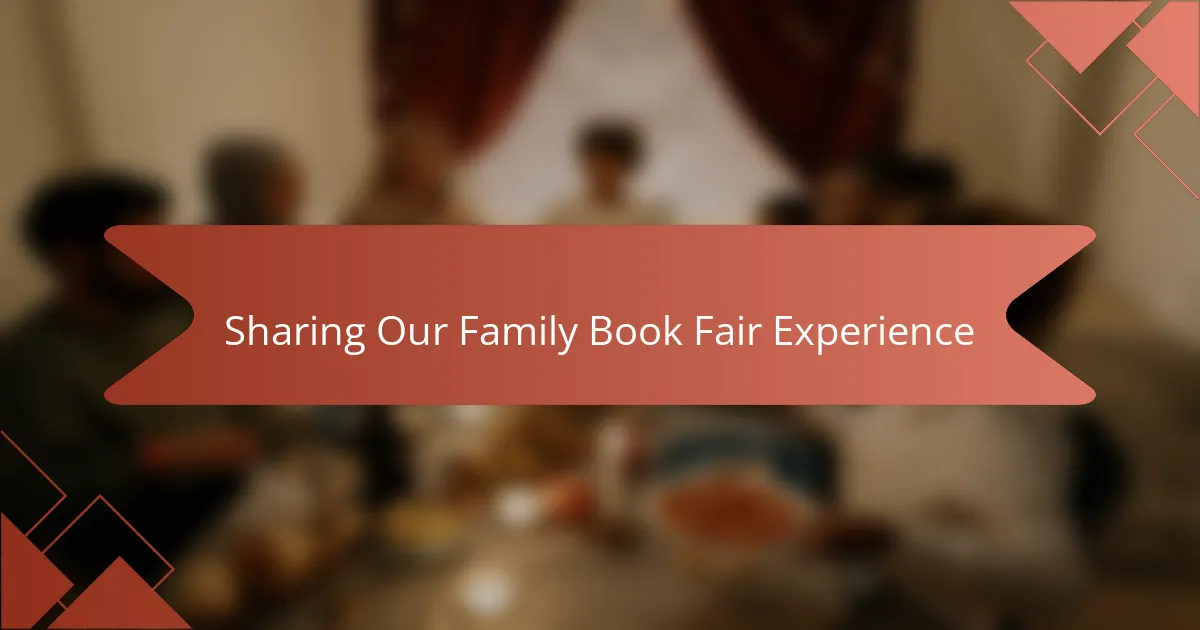Key takeaways
- Scholastic Book Fairs create an engaging environment that fosters a love for reading among children by allowing them to choose books that resonate with their interests.
- Reading as a family strengthens bonds and opens pathways for discussions about diverse cultures and ideas, enhancing family life and communication skills.
- Planning a book fair visit, including discussing book preferences and setting a budget, enriches the experience and encourages children to make thoughtful choices.
- Regular reading habits can be inspired through daily rituals, celebrating milestones, and empowering children to explore new genres, making reading a joyful part of their lives.

What Are Scholastic Book Fairs
Scholastic Book Fairs are vibrant, temporary events hosted in schools where kids can browse a carefully curated selection of books. I remember the excitement on my child’s face as they flipped through colorful pages, discovering stories that truly sparked their imagination. Have you ever noticed how a simple book can instantly draw a child in, making reading feel like an adventure?
These fairs are more than just sales events; they create a cozy, inviting space that encourages kids to choose books that resonate with their interests and personalities. From my experience, this hands-on approach makes reading less of a chore and more of a joyful experience. Doesn’t it feel special when your child picks out a book on their own, proud of their choice?
What makes Scholastic Book Fairs stand out is how they connect families, teachers, and students in a shared love for reading. I’ve seen how these fairs often become community celebrations, fostering excitement around literacy that lasts well beyond the few days they’re open. Isn’t it amazing how such a simple idea can have a lasting impact on a child’s reading journey?

Benefits of Reading for Families
Reading together as a family is more than just a pastime; it builds bonds that last a lifetime. I’ve found that sharing stories creates a special kind of closeness, where we connect not just through words but through emotions and imagination. Have you ever noticed how a quiet evening with a good book can turn into heartfelt conversations about dreams and values?
Books also open windows to new perspectives that enrich family life. When my kids brought home different genres, it sparked discussions about cultures, ideas, and experiences that we might never have explored otherwise. This shared curiosity turns reading into a collective adventure, making learning a joyful family journey.
Moreover, the habit of reading boosts confidence and communication skills for everyone at the dinner table. I’ve watched shy family members blossom as they eagerly share their favorite stories or ideas from books. Isn’t it incredible how words can empower us, making family time both fun and meaningful?

How Book Fairs Encourage Reading
There’s something truly magical about the energy at a Scholastic Book Fair that makes kids want to read. I’ve noticed how the colorful displays and inviting setups turn book shopping into a treasure hunt, where every title feels like a hidden gem waiting to be discovered. Isn’t it wonderful how that excitement can turn a reluctant reader into someone eager to dive into a story?
From my experience, having the freedom to browse and choose books themselves gives children a sense of ownership over their reading journey. When my child picked out a graphic novel at a fair, it wasn’t just a book purchase—it was a proud moment of independence and self-expression. Have you seen how that small decision can light a lasting spark for reading?
What really stands out to me is how book fairs bring excitement and celebration around books, making reading feel like a community event rather than a solitary chore. I’ve watched kids chatter about their favorite finds, sharing recommendations and creating a shared buzz that I believe keeps their curiosity alive long after the fair ends. Doesn’t that make reading feel more alive and inviting?

Planning a Successful Book Fair Visit
To make the most of a Scholastic Book Fair visit, I always plan ahead by setting aside time when the kids are well-rested and excited. Have you noticed how a tired or distracted child can quickly lose interest? Picking the right moment helps everyone enjoy the experience fully.
I also like to talk with my child beforehand about what kinds of books they might want to explore. This little chat gets them thinking and makes the visit more meaningful because they come with ideas, not just random browsing. When they chose a science fiction book after our talk, I saw their eyes light up with anticipation—that’s a moment I cherish.
Finally, I make sure to bring a set spending limit, but with some flexibility for a surprise treat. Have you experienced the joy in watching your child wrestle happily with choosing just one more book? This balance keeps the visit fun and purposeful, teaching them about making thoughtful decisions without pressure.

Choosing Books for Different Ages
Selecting books that suit a child’s age is like finding the perfect key to unlock their imagination. I’ve learned that toddlers often gravitate toward bright pictures and simple words, while older kids prefer stories they can relate to or that challenge their growing curiosity. Have you noticed how a younger child’s eyes light up at colorful board books, while a tween might get lost in a thrilling chapter book?
It’s important to consider not only age but also each child’s interests and reading level. For example, when my younger one adored animal tales, I chose picture books full of lively creatures; meanwhile, my older child was captivated by fantasy novels with intricate plots. Matching books to these unique preferences made reading a joyful discovery rather than a forced task.
Sometimes, I ask myself: how do we balance guiding children without limiting their choices? I’ve found that at Scholastic Book Fairs, the variety allows kids to explore genres beyond their usual picks, encouraging them to step out of their comfort zones while still feeling confident with age-appropriate content. Isn’t it wonderful when a child surprises you by picking a book you never expected them to enjoy?

Inspiring Children to Read Regularly
Inspiring children to read regularly starts with creating moments where books feel like a natural and exciting part of their day. I’ve noticed that when reading becomes a fun habit rather than a task, my kids return to their books eagerly, often asking for “just one more chapter” before bedtime. Have you ever experienced that little spark of joy when a child chooses a book on their own and dives right in?
From my experience, consistency is key. Setting aside simple daily reading times — even just 10 minutes — has made a big difference in nurturing their love for stories. It’s like watering a plant; small, regular doses of attention help their reading skills and enthusiasm grow steadily without pressure.
I also find that celebrating their reading milestones, no matter how small, fuels their motivation to keep going. Whether it’s a high-five for finishing a book or chatting about their favorite characters, these moments show that reading is something to be proud of. Doesn’t it feel rewarding to watch a child gain confidence through their growing reading habit?

Sharing Our Family Book Fair Experience
Our first time walking through the book fair felt like entering a world made just for kids. I still remember my child’s excitement as they carefully picked out their very first book—such a simple moment, yet it sparked a lifelong love for reading. Have you noticed how sharing that anticipation with your child creates memories that linger well beyond the pages?
Each year, returning to the Scholastic Book Fair became a treasured tradition in our family. I loved watching my kids compare notes on their finds, recommending stories to one another with such enthusiasm. Isn’t it amazing how a community event like this can turn our little readers into confident book explorers?
What stood out most to me was the way these fairs fostered family connection. We weren’t just buying books; we were creating shared experiences around stories that brought us closer. Have you experienced how something as simple as a book fair can weave reading into the fabric of family life?